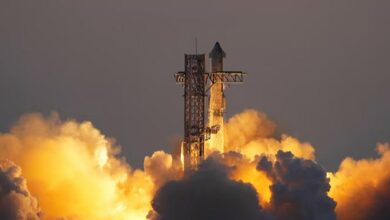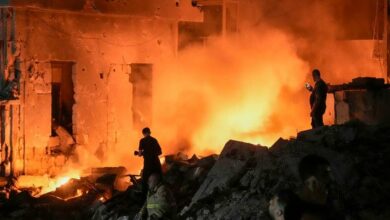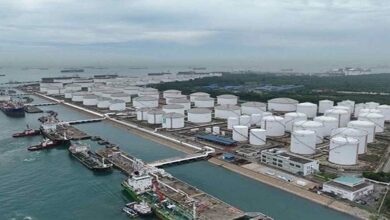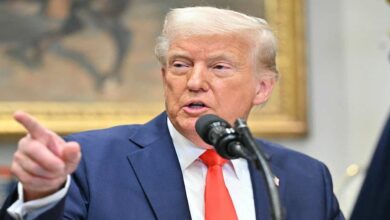Tesla unveils 20 Cybercabs at We, Robot event
At last, Tesla unveiled the Cybercab, which seems to be a smaller, sleeker Cybertruck. While many were hoping for at least one prototype of a robotaxi devoid of pedals or steering wheel, Tesla CEO Elon Musk pleased his enthusiasts with a fleet of twenty cars.
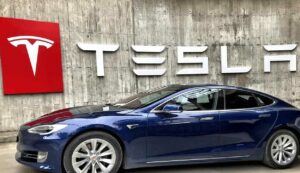
Thursday’s spectacular “We, Robot” event was at Warner Bros. Discovery studio. Musk stepped up to a robotaxi, which opened its suicide doors, and performed a brief demonstration around the well-kept Hollywood studio before ascending the stage.
Musk reiterated earlier assertions that autonomous driving would be so cheap, equivalent to “individualized mass transit.” He stated he thought the Cybercab’s running cost would be over time around $0.20 per mile.
Musk stated, “And you will be able to buy one,” adding that the price will be less than $30,000.
Musk also said he expects Tesla to begin using the Model 3 and Model Y to undertake “unsupervised FSD in Texas and California next year.” He stated he expected the Cybercab to be in production by 2026 or “before 2027,” even if he admitted he had overly rosy view on deadlines.
When Musk said they will be able to test the Cybercabs personally at the event, fans applauded.
Musk said the robotaxi also lacks a plug in and instead uses “inductive charging.”
Originally scheduled to launch the Robotaxi or Cybercab in August, Tesla postponed the release after corporate requests for a “significant design change to the front.”
After turning away from stressing the manufacturing of a $25,000 EV and laying off 10% of workers, including most of the charging team, Tesla’s effort to go “balls to the wall for autonomy” this year includes the Robotaxi reveal. But Musk’s vision of an autonomous driving future has been in play for years, and a big part of the reason investors price Tesla’s shares not as a carmaker but rather as a technology firm.
Based on at least 2019, the Cybercab prototype reflects part of the business idea Musk has proposed, wherein the carmaker will operate its own fleet of specialized robotaxis on a Tesla ride-hail app, Tesla hinted to during its first quarter investor conference.
Musk has said that the other half of the plan is like Uber or Airbnb, whereby Tesla owners will be able to add properly equipped vehicles to Tesla’s ride-hailing app to generate extra income when the cars are not in use and Tesla will take 25% to 30% of the revenue (akin to Apple’s App Store take rate). Musk also noted that while Tesla expected robotaxi journeys to be less expensive than public transit, he did not specify by when.
“We will have over a million Tesla cars on the road with Full Self-Driving hardware, feature complete, at a reliability level we would consider that no one needs to pay attention, meaning you could go to sleep,” Musk stated during Tesla’s 2019 Autonomy Day.
“From our perspective, if you fast forward a year, maybe a year and three months, but next year for sure we will have over a million robotic axis on the road. The fleet awakens to an over-the-air upgrade. That is all that is required. Of course, by 2020 that did not transpire.
On hundreds of thousands of cars already, Tesla’s Full Self-Driving software depends only on cameras to sense its surroundings. Industry analysts claim that despite its name, this vision-only technique is the reason the program is still not really self-driving. While FSD can handle many automated driving chores, it still depends on a person behind the wheel to remain vigilant and take over as necessary.
Furthermore unknown is whether current Teslas really possess the necessary technology to reach the complete self-driving future Musk has been heralding for years. The almost 5x increase in parameter count required to fuel Tesla’s next-generation AI “is very difficult to achieve without upgrading the vehicle inference computer,” Musk wrote on X in July.
Still, Tesla will have to show the safety argument if it wants to commercialize Level 4 autonomous driving, meaning the car can drive itself under certain situations without requiring a person to take control. For tragic accidents using Tesla’s lower level advanced driving assistance system, Autopilot, many government inquiries have been launched.
While most other jurisdictions would make Tesla prove at least that its cars are capable of pulling themselves over safely, California has the most strict regulatory procedure for testing and deployment of autonomous vehicles.
Furthermore, the Cybercab would not be in conformity with federal vehicle safety regulations as it lacks pedals or steering wheels. Before shelving the project, GM’s Cruise had sought to bring its purpose-built robotaxi, the Origin, to production but failed to get the required National Highway Traffic and Safety Administration clearances.


